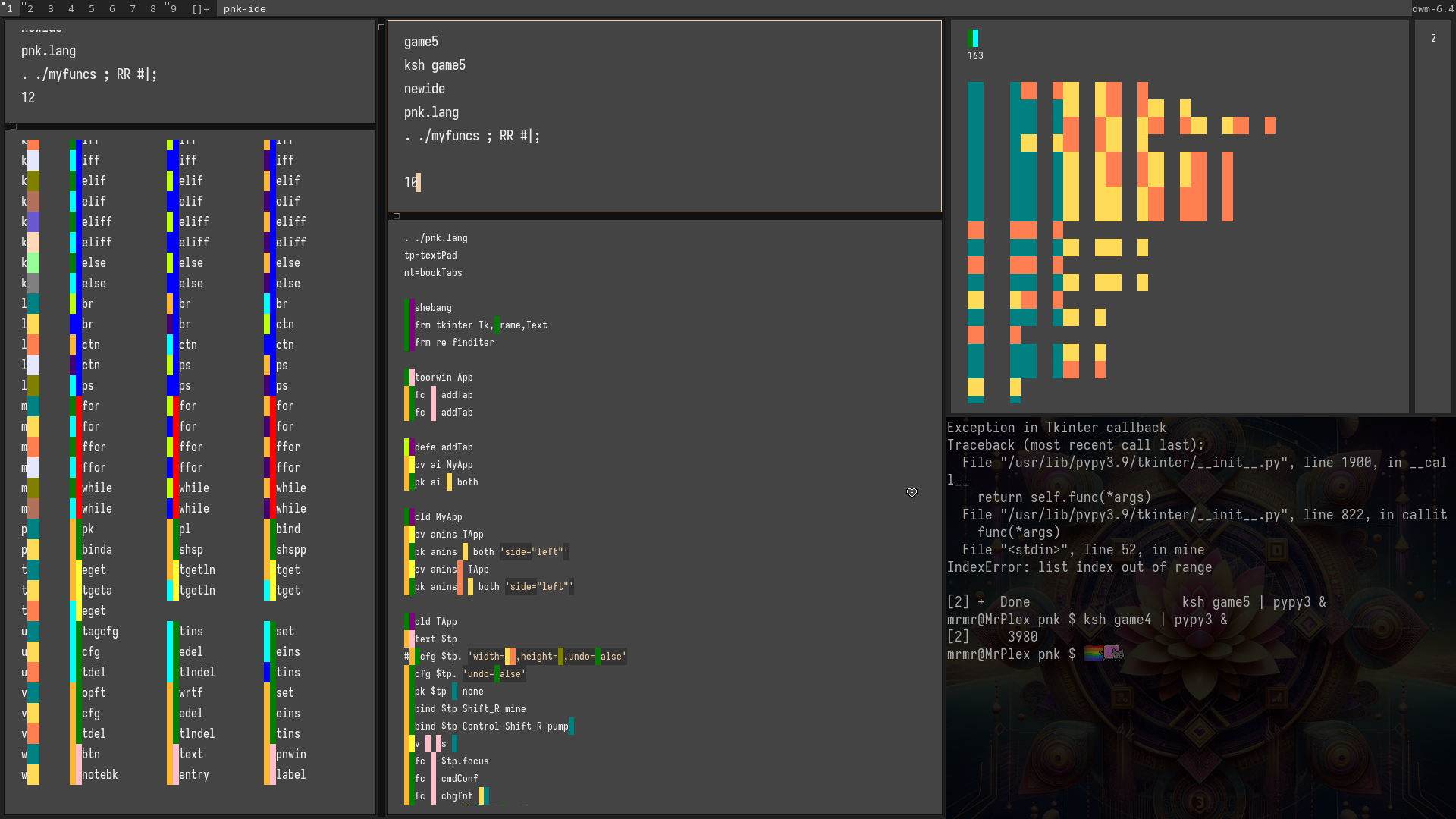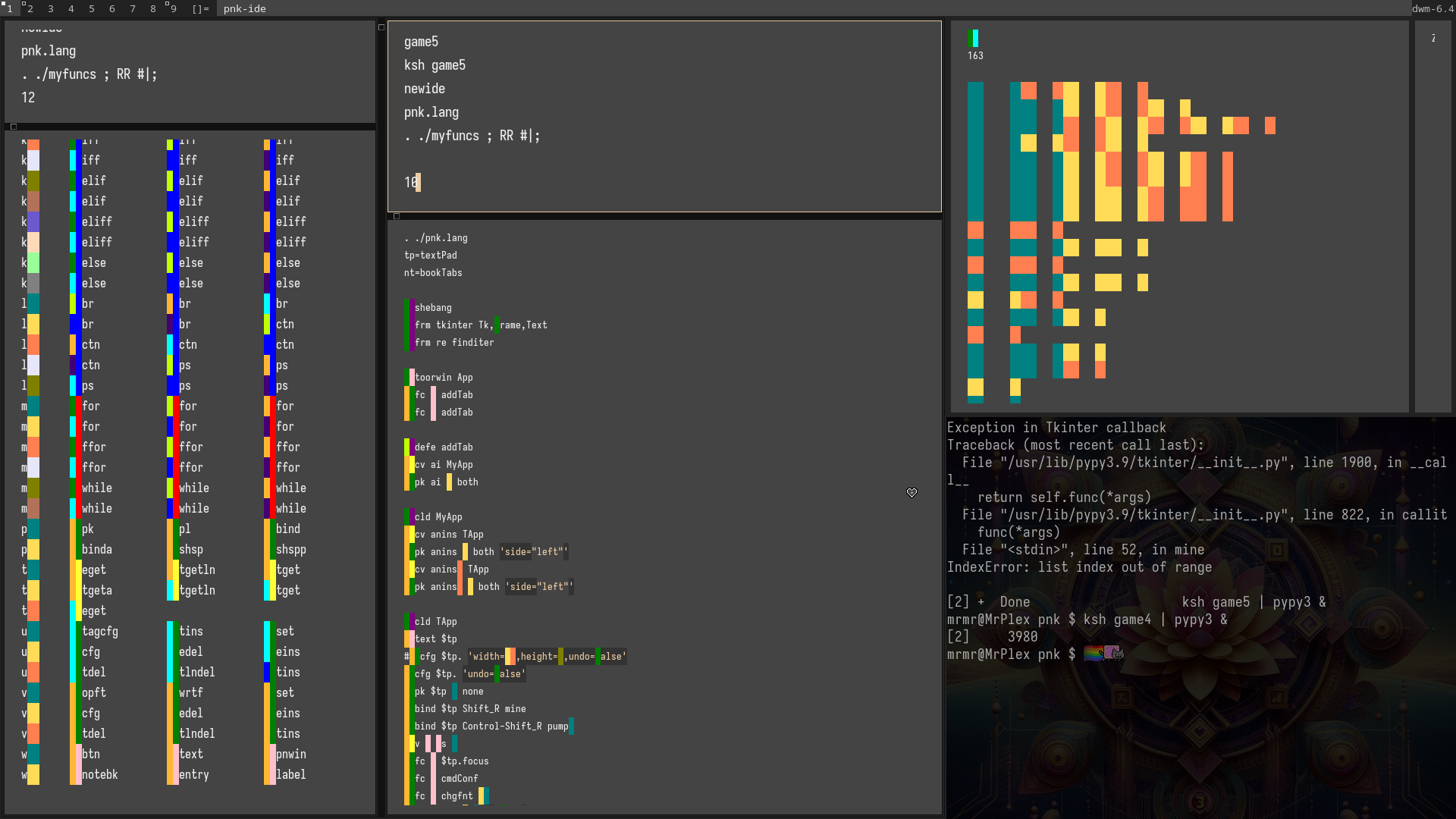Yeah! What he said!
I learned so much from this! Its funny I have been working on shell stuff.
Spring Dash seems very much like Ghostrunner just in nature and no enemies. Very cool tho!
I need to build a site like this for my app lol
Very nice is what I am saying!
https://github.com/dislux-hapfyl/pynksh
Working on making dev of tkinter and pythong* a breeze for any newcomer that's willing to learn a bit different from the mainstream tutorials, videos, docs and mass methods of learning. This guy's ways are more fun than any of those YT videos of piecemeal-coding. If you find that kind of learning extremely boring hmu fam...
*I dont like python syntax, it's uGly, but I do because it was waiting for me to abstract it away by creating pnk.lang. When you see my repo you will understand, maybe...
#allerrorsmatter
Key in anything. Faulty language is faulty everything from there on out.
In Oct’23 a basic Text widget with Subprocess to run shell commands allowed me to take my command line fu into a different arena because Tkinter gave me special tricks. This tool (shell functions) allows me to type up GUI apps or any Python script with less effort, for my fingers and brain.
wc newide; ksh newide | wc
513 1671 11018 newide in pnk
604 1987 29867 newide in python
The blocks of color are capital letters colored using tkinter methods (tag_add & tag_configure) with a bg and fg of the same color to make it look like a lego block, it’s all ASCII. On the right, an idle clicker game/toy made with pnk.lang, also just ASCII/UTF-8. The IDE you see in the pic also was coded using functional shell language I call pnk.lang and the original first iteration of this specification is in the legacy folder in the repo below. Just me learning how to code faster in Python but in shell but in neither at this point.
https://github.com/dislux-hapfyl/pynksh
Don’t be put off by Ksh because Bash can also interpret it, since it’s just shell functions that print Python code. But I have plans to use an Xbox controller so I can move away from building with the keyboard at piecemeal rates. I will do this by abstracting away identifiers and all data we use as engineers into “dictionaries” to then transform it into a spatial system. I already done this first step! Using a basic grid with a maximum of 10 rows x 3 cols, indexing row[0-9] col[0-2], as you see there on the left side, and by using a letter I then categorize the functions of pnk(shell+python) so I can have 30 x 26[a-z] available slots; a00 b11 k22 and so on…by making it a visual shortcut that reduces cognitive load and typing for me.
Take a closer look at my repo without dismissing it too quickly. It could seem unnecessary but maybe someone else can see what I have made as useful and how we gonna take it to higher levels of abstraction and create a new realm for making computer applications in an abstract game/IDE of art and code. Perhaps it’s that creator effect that happens when you make something for the first time that makes me see its future utility and appeal. All this was made incrementally using my own software I built from scratch. I do have a great vision and would love to speak to anyone who is interested. I also demonstrate the utility of this small tool on youtube[link in repo]. Thanks.

What about this?
Ty for this


Fork it and Make Pull Request. 👍